Treating Leukemia with Cord Blood
Leukemia, a deadly form of cancer and one of the most common for infants, can be treated with a combination of chemotherapy and stem cells. According to new research, cord blood is a viable therapy option for patients with this dangerous condition.
What is leukemia?
Leukemia starts in bone marrow, which is responsible for making new red and white blood cells. Red blood cells move oxygen throughout the body, while white cells fight infections. When the body develops leukemia, white cells grow too quickly and push the entire system out of balance.
Leukemia can cause other dangerous conditions, including:
- Anemia
- Infections
- Excessive bleeding
Leukemia usually starts with a mutation in DNA, leading to rapid cell growth. Researchers believe the disease may be genetic, and may be aggravated by certain factors in the environment. Leukemia can spread into the lymphatic system and, from there, move throughout the body.
Doctors classify leukemia into two major types:
- Acute – Blood cells grow and split much quicker than normal. The cancer spreads rapidly, and patients are often forced into aggressive treatment options.
- Chronic – Cells don’t grow as quickly as in acute leukemia, and side effects are rarely noticeable early on. This means the cancer can grow for years without proper diagnosis.
While doctors are unsure what exactly causes leukemia, exposure to large amounts of radiation or chemicals on a regular basis drastically raises your chances of developing this dangerous condition.
Symptoms of leukemia
Common symptoms of leukemia include:
- Fever
- Chills
- Fatigue
- Frequent infections
- Sudden weight loss
- Excessive bleeding
- Swelling
- Bone tenderness
Benefits of cord blood
While cord blood research is still underway, several clinical trials tested bone marrow therapy for the treatment of leukemia. In these studies, 30% of patients found a suitable donor match, and another 20% received transplants from a “mismatched” donor. The remaining 50% of patients were unable to receive treatment.
For bone marrow cells, matching donors have a much higher chance of successful transplants. Mismatched stem cells may still be effective, but it’s less likely. Cord blood therapy, on the other hand, doesn’t require an exact donor match.
According to the New England Journal of Medicine, cord blood stem cells offer several advantages over bone marrow cells:
- First, cord blood cells are more accessible. Cells from cord blood are available immediately, so doctors identify and administer treatment quicker than similar bone marrow therapies.
- Second, donor matching is less important, since mismatched cord blood cells can still be very effective. This means more patients will receive a successful transplant, and have a wider variety of treatment options using cord blood.
Cord blood cells are still in limited supply. Many doctors are concerned cord blood donations are too small, and cannot effectively treat leukemia. Donations only contain about 10% of the necessary hematopoietic cells, which are diverse cells used in regenerative therapy.
Studies using cord blood
While the New England Journal of Medicine study found cord blood and bone marrow cells equally effective at treating leukemia, researchers believe cord blood cells have a smaller chance of acute graft-versus-host disease, which causes transplanted cells to attack the patient. This disease is most common for mismatched bone marrow transplants.
The study, which took place between 1996-2001, looked at patients ages 16-60 with various cases of leukemia treated with stem cell transplantation.
Another European study (1998-2002) also looking at bone marrow and cord blood therapies, found little difference between the two types of transplants. However, only about 6% of patients were matched for cord blood transplants, and the rest were from mismatched donors. This means cord blood donors don’t require an exact match but the cells are just as effective as a matched bone marrow transplant.
In both studies, patients that underwent cord blood transplants received a smaller amount of cells, which means blood cell replacement was slower than with bone marrow cells. However, the studies found cord blood treatment – even in smaller amounts – similar to bone marrow therapy results. Researchers noted cord blood transplants have room for improvement, and may eventually be the most effective form of leukemia therapy, especially for patients with a mixed ethnic background.
Future treatments
Medical experts are still searching for better therapies using cord blood. Possible future treatments include:
- Harvesting cells from multiple donors for a single patient, to speed up blood cell replacement
- Artificially increasing the amount of cord blood stem cells before a transplant
- Using cord blood from a family member in combination with an unrelated donor
The Institute of Medicine is looking at new ways to expand existing cord blood programs, and many researchers advocate a greater awareness for cord blood treatments. Stem cells derived from cord blood are now a viable treatment, and may be the best option for patients with leukemia.
How stem cell treatments work
Stem cells restore healthy bone marrow, and boost the body’s natural immune system, which helps treat leukemia. Before a transplant, patients are treated with chemotherapy, and often radiation therapy, to eliminate leukemia cells. Some patients will also receive a smaller dose of chemotherapy right before stem cell treatment.
Stem cells are then injected “intravenously” – directly into the veins – which takes about an hour. These new cells travel to depleted bone marrow, and begin treating the damaged areas. Medical staff monitor progress over the next several months by checking blood cell count, and some patients require additional red blood cell transplants.
Your baby’s umbilical cord is full of life-saving stem cells. Read more about cord blood here.

